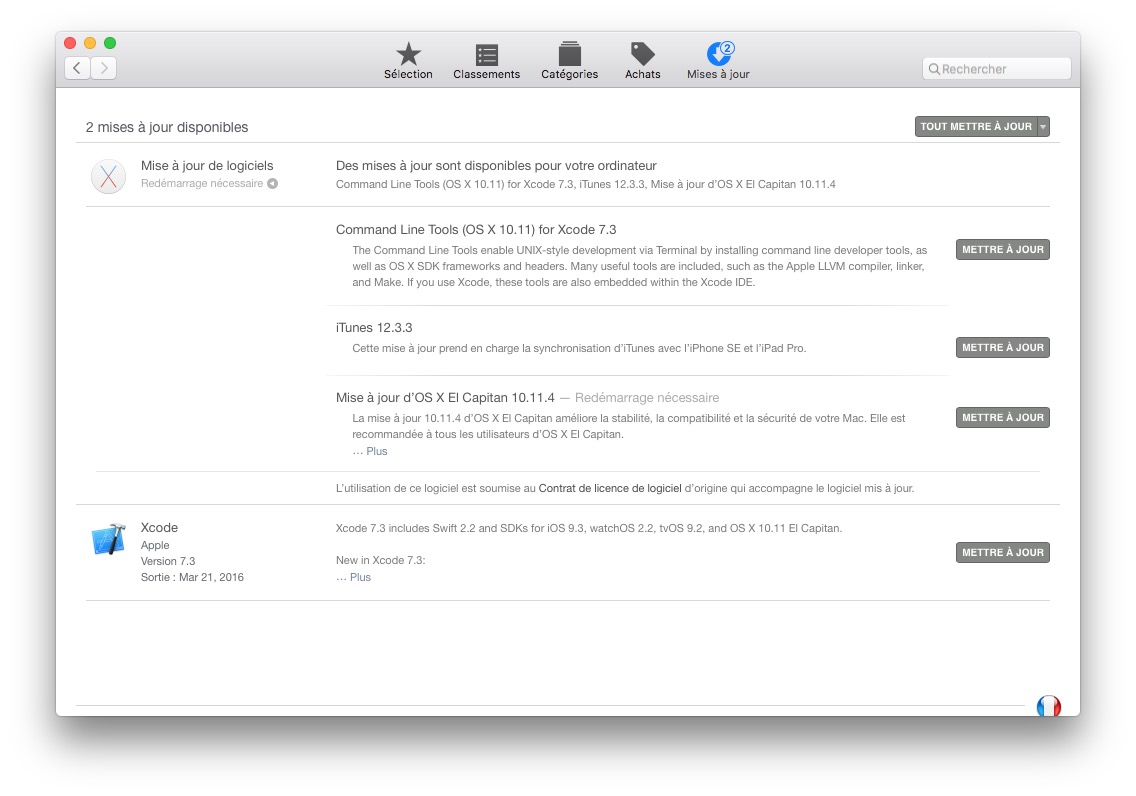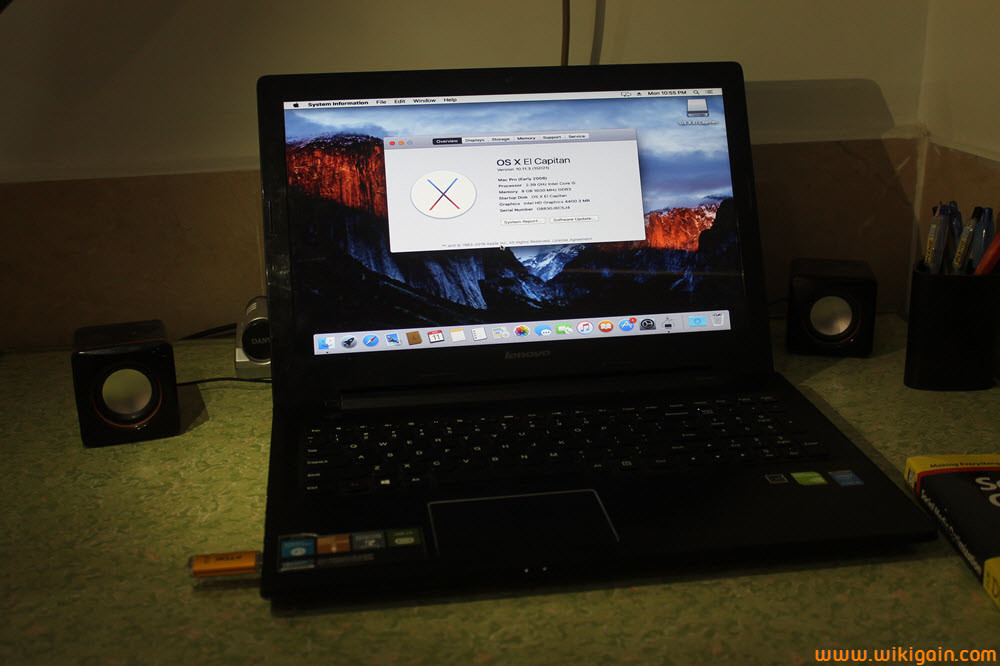If you use pkgutil to expand the InstallMacOSX.pkg it opens to three items, the Distribution file, InstallMacOSX.pkg and Resources. You can alter the Distribution file to ignore the supported platform check, see below.
- Make El Capitan Install Usb
- Mac Os 10.11 Download
- Mac Os El Capitan Clean Install Usb
- Download Os X El Capitan Dmg
- El Capitan Installer Download


Before getting started, you will need to download Mac OS El Capitan latest version from App Store and also download latest UniBeast-6.1.1 from here directly, but the full resource you can find it here. When the OS X El Capitan and Unibeast downloaded, open Disk Utility and click Erase then enter a name and select format, click Erase. Bootable USB Stick - macOS X El Capitan 10.11 - Full OS Install, Reinstall, Recovery and Upgrade SANDISK USB FLASH DRIVE 2.0/3.1 - 16GB - 5 years warranty Latest certificate (expires These USBs are NOT produced by Apple. Installing or upgrading your software from an USB is a quick process and can take 10-15 minutes to complete. OS X El Capitan Installer. Official OS X El Capitan Installer from the Mac App Store. Un-archive the zip archive and you will get the app Installer. A bootable ISO or bootable USB can be made from this installer. Instructions on how to do that are on the Internet/Youtube.
Creating the Install OS X El Capitan.app on a mac that came with a newer OS than El Capitan.
Download the InstallMacOSX.dmg from Section 4 of How To Upgrade To El Capitan
Double-click to open InstallMacOSX.dmg to Install MacOSX.pkg.
Drag InstallMacOSX.pkg to the Desktop.
Open Terminal, enter the text
A folder will be created on the Desktop after a while with the contents of the .pkg file.
Dying light. In there you will see an item called Distribution, Control-click on that and select Open With
go to Other and select Text Edit.
When the file opens scroll down to the section that reads,
function isSupportedPlatform(){
type in at the end return true; so it now reads as,
function isSupportedPlatform(){return true;
Now click Save and close the document.
Go back to Terminal and enter the text,
press Return, after several minutes, be patient, (check to see if the prompt has returned to Terminal) a new package will be created on the Desktop.
When created double-click on that and an installation window will open where you will now convert the
new InstallElCapitan.pkg to the Install OS X El Capitan.app which will be placed in your Applications folder.
You can now create a bootable USB using the install app and createinstallmedia, Sony dpp-ex50 driver.
If you have the time I would be grateful if you could give this a trial, it works here on my mac, but I would like confirmation from yourself or any others reading this that the procedure works on macs that came with macOS Sierra or newer pre-installed. Oh and tell me if my description of the procedure is easy to follow and understand.
Jan 15, 2020 12:58 AM
Confirm that the USB drive will lose it’s data and enter the Admin password when asked; Disk Utility will now create a bootable OS X Mountain Lion installer drive out of USB drive using the disk image, this can take a little while depending on how fast the drive and Mac are but 20-30 minutes isn’t unusual. Better support under Linux through PlayOnLinux software allowing easy install/uninstall. Improved OS X User Interface and compatibiltiy with OS X 10.11 El Capitan. Updated license usage. BugFix: - Improved Memory usage and minor optimization and improvements. Fixed various minor bugs - Fixed minor bug when saving compressed TIFF files.
These advanced steps are primarily for system administrators and others who are familiar with the command line. You don't need a bootable installer to upgrade macOS or reinstall macOS, but it can be useful when you want to install on multiple computers without downloading the installer each time.
El Capitan Usb Installer Download
What you need to create a bootable installer
- A USB flash drive or other secondary volume formatted as Mac OS Extended, with at least 14GB of available storage
- A downloaded installer for macOS Big Sur, Catalina, Mojave, High Sierra, or El Capitan
Download macOS
- Download: macOS Big Sur, macOS Catalina, macOS Mojave, or macOS High Sierra
These download to your Applications folder as an app named Install macOS [version name]. If the installer opens after downloading, quit it without continuing installation. To get the correct installer, download from a Mac that is using macOS Sierra 10.12.5 or later, or El Capitan 10.11.6. Enterprise administrators, please download from Apple, not a locally hosted software-update server. - Download: OS X El Capitan
This downloads as a disk image named InstallMacOSX.dmg. On a Mac that is compatible with El Capitan, open the disk image and run the installer within, named InstallMacOSX.pkg. It installs an app named Install OS X El Capitan into your Applications folder. You will create the bootable installer from this app, not from the disk image or .pkg installer.
Use the 'createinstallmedia' command in Terminal
- Connect the USB flash drive or other volume that you're using for the bootable installer.
- Open Terminal, which is in the Utilities folder of your Applications folder.
- Type or paste one of the following commands in Terminal. These assume that the installer is in your Applications folder, and MyVolume is the name of the USB flash drive or other volume you're using. If it has a different name, replace
MyVolumein these commands with the name of your volume.
Big Sur:*
Catalina:*
Mojave:*
High Sierra:*
El Capitan:
* If your Mac is using macOS Sierra or earlier, include the --applicationpath argument and installer path, similar to the way this is done in the command for El Capitan.
After typing the command:
- Press Return to enter the command.
- When prompted, type your administrator password and press Return again. Terminal doesn't show any characters as you type your password.
- When prompted, type
Yto confirm that you want to erase the volume, then press Return. Terminal shows the progress as the volume is erased. - After the volume is erased, you may see an alert that Terminal would like to access files on a removable volume. Click OK to allow the copy to proceed.
- When Terminal says that it's done, the volume will have the same name as the installer you downloaded, such as Install macOS Big Sur. You can now quit Terminal and eject the volume.
Make El Capitan Usb Installer
Use the bootable installer
Determine whether you're using a Mac with Apple silicon, then follow the appropriate steps:
Apple silicon
- Plug the bootable installer into a Mac that is connected to the internet and compatible with the version of macOS you're installing.
- Turn on your Mac and continue to hold the power button until you see the startup options window, which shows your bootable volumes and a gear icon labled Options.
- Select the volume containing the bootable installer, then click Continue.
- When the macOS installer opens, follow the onscreen instructions.
Intel processor
Make El Capitan Install Usb
- Plug the bootable installer into a Mac that is connected to the internet and compatible with the version of macOS you're installing.
- Press and hold the Option (Alt) ⌥ key immediately after turning on or restarting your Mac.
- Release the Option key when you see a dark screen showing your bootable volumes.
- Select the volume containing the bootable installer. Then click the up arrow or press Return.
If you can't start up from the bootable installer, make sure that the External Boot setting in Startup Security Utility is set to allow booting from external media. - Choose your language, if prompted.
- Select Install macOS (or Install OS X) from the Utilities window, then click Continue and follow the onscreen instructions.
Learn more
Mac Os 10.11 Download
El Capitan Usb Install Cannot Be Verified
Mac Os El Capitan Clean Install Usb
For more information about the createinstallmedia command and the arguments that you can use with it, make sure that the macOS installer is in your Applications folder, then enter the appropriate path in Terminal:
- Big Sur: /Applications/Install macOS Big Sur.app/Contents/Resources/createinstallmedia
- Catalina: /Applications/Install macOS Catalina.app/Contents/Resources/createinstallmedia
- Mojave: /Applications/Install macOS Mojave.app/Contents/Resources/createinstallmedia
- High Sierra: /Applications/Install macOS High Sierra.app/Contents/Resources/createinstallmedia
- El Capitan: /Applications/Install OS X El Capitan.app/Contents/Resources/createinstallmedia
Download Os X El Capitan Dmg
El Capitan Usb Installer Torrent

El Capitan Installer Download
A bootable installer doesn't download macOS from the internet, but it does require an internet connection to get firmware and other information specific to the Mac model.